I have the following Python code for constructing a Poincare Section for chaotic Pendulum which uses RK4 algorithm and np arrays:
import numpy as np
import matplotlib.pyplot as plt
from matplotlib import cm
# Define function to calculate equations
def f(t, Yvec):
"""
Computes the vector f.
"""
theta = Yvec[0]
omega = Yvec[1]
phi = Yvec[2]
fvec = np.zeros(3)
fvec[0] = omega
fvec[1] = -g/l*np.sin(theta) - gamma*omega + A*np.sin(phi)
fvec[2] = drive
return fvec
# Define a function for RK4 method
def rk4(t, Y_n, h):
"""
Computes the vector Y(t_{n+1}).
"""
k1 = h*f(t, Y_n)
k2 = h*f(t + h/2, Y_n + k1/2)
k3 = h*f(t + h/2, Y_n + k2/2)
k4 = h*f(t + h, Y_n + k3)
Y_nplus1 = Y_n + (k1 + 2*k2 + 2*k3 + k4)/6
return Y_nplus1
# main program
# Define constants
g = 9.8 # acceleration due to gravity
l = 9.8 # length of the pendulum
gamma = 0.2 # damping coefficient
A = 1.2 # amplitude of driving force
drive = 2/3 # angular frequency of driving force
n = 2 # order of ODE
# Define time interval and step size
dt = 0.001 # step size
t0 = 0 # initial t
tf = 100000 # final t
t = np.arange(t0, tf, dt)
# Initialize array filled with zeroes to store solution after every increment
theta_array = np.zeros(len(t))
omega_array = np.zeros(len(t))
phi_array = np.zeros(len(t))
# Define Y vector with initial conditions which are also the values for first element of the arrays
Y = [0, 0, 2*np.pi]
theta_array[0] = Y[0]
omega_array[0] = Y[1]
phi_array[0] = Y[2]
# Increment the Y vector according to RK4 and keep storing values in the arrays by defining a loop
sols = []
for i in range(len(t) - 1):
Y_new = rk4(t[i], Y, dt)
theta_array[i+1] = Y_new[0]
omega_array[i+1] = Y_new[1]
phi_array[i+1] = Y_new[2]
# Check for Poincare section
if np.abs(Y_new[2] % (2*np.pi)) < dt:
sols.append([np.mod(Y_new[0] + np.pi, 2*np.pi) - np.pi, Y_new[1]])
Y = Y_new
sols = np.array(sols)
# Define the color map
cmap = cm.get_cmap('plasma')
# Plot the results
fig, ax = plt.subplots(figsize=(12,8))
for i in range(len(sols)):
color = cmap(i / len(sols))
ax.plot(sols[i,0], sols[i,1], '.', markersize=2, color=color)
ax.set_xlabel('θ')
ax.set_ylabel('ω')
plt.show()
Right now it takes more that 30 minutes to run this code. I tried decreasing the step size but then I don't get a clear Poincare Section. How to speed up the compilation of this code using Numba?
